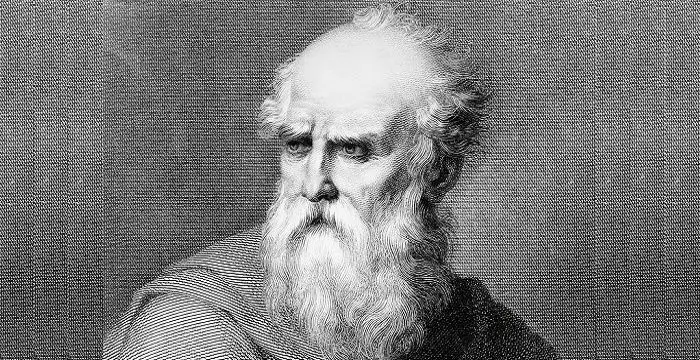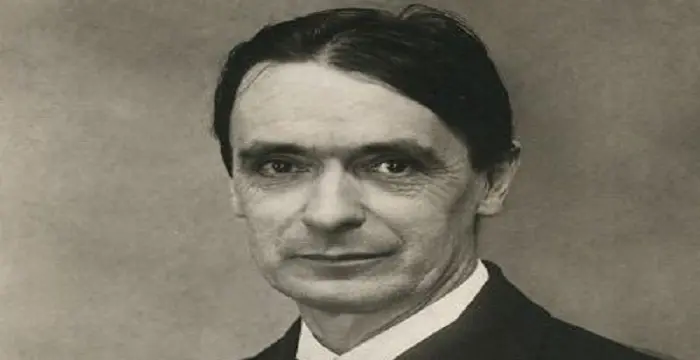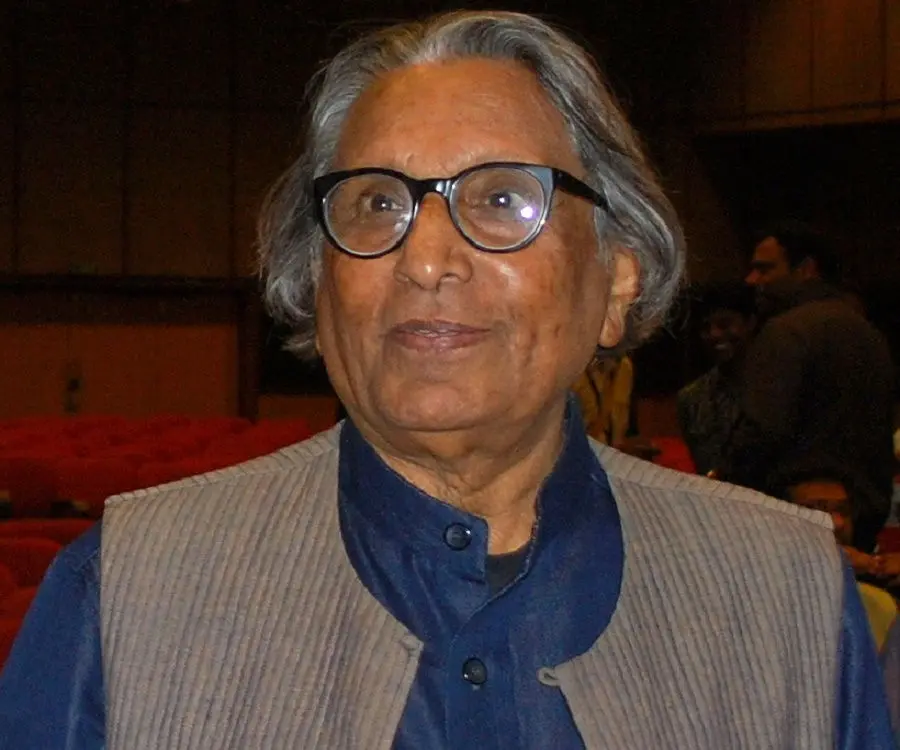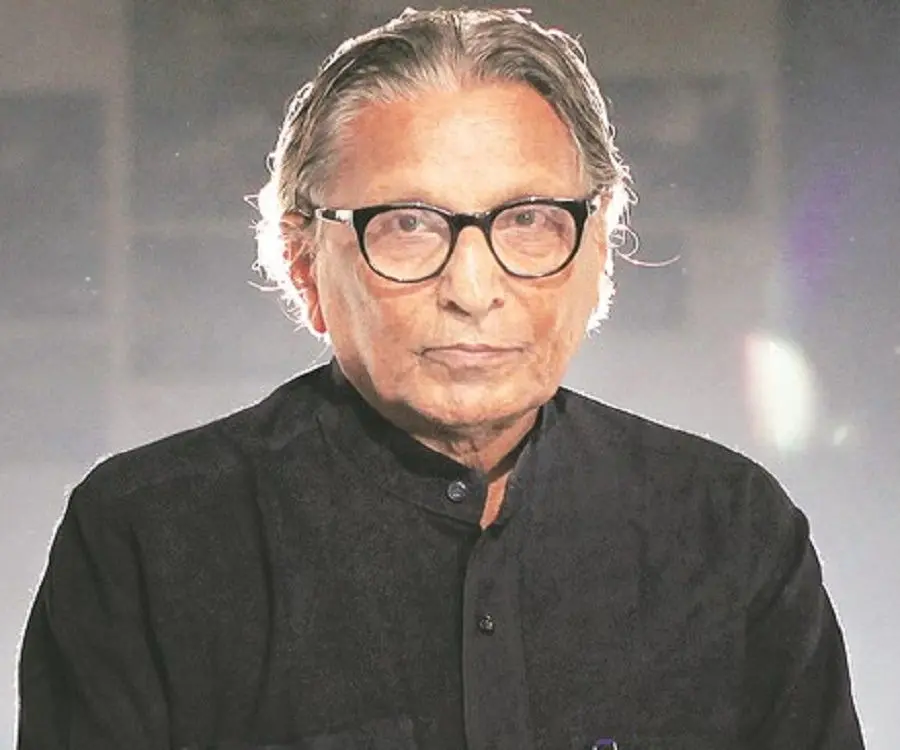
Balkrishna V Doshi - Architects, Timeline and Childhood
Balkrishna V Doshi's Personal Details
Balkrishna Vithaldas Doshi is an eminent Indian architect
| Information | Detail |
|---|---|
| Birthday | August 26, 1927 |
| Nationality | Indian |
| Famous | Architects |
| Known as | Balkrishna Vithaldas Doshi |
| Universities |
|
| Birth Place | Pune |
| Gender | Male |
| Sun Sign | Virgo |
| Born in | Pune |
| Famous as | Architect |
// Famous Architects
Vitruvius
Vitruvius was a Roman architect, author, and military engineer during the 1st century BC. Check out this biography to know about his childhood, family life, achievements and fun facts about his life.
Rudolf Steiner
Rudolf Steiner introduced groundbreaking ideas in realms of spirituality, art, education and agriculture. Check out this biography to know about his childhood, family life, achievements and other facts related to his life.
Zaha Hadid
The famous Iraqi-British architect Zaha Hadid is known for her designs of the ‘Rosenthal Center for Contemporary Art’ and ‘Heydar Aliyev Center’. To know more about her childhood, profile, career and timeline read on.
Balkrishna V Doshi's photo
Who is Balkrishna V Doshi?
Balkrishna Vithaldas Doshi is an eminent Indian architect who has made valuable contribution to the evolution of architectural discourse in India. What makes Dr Doshi a remarkably outstanding architect is his innovativeness that he incorporates in his concepts of sustainability. His pioneering work on low-cost housing is a perfect example of his brilliance wherein creativity meets suitability. He has been a key figure in the development of modern city planning in India, and championing architecture that has a contemporary outlook but is built with a traditional approach. Known among India's most influential 20th century architects, Doshi in his early years was largely influenced by the works of Le Corbusier and Louis Kahn. Apart from being an architect, Doshi has worked as an educator and academician as well. He has been the founder of several prestigious institutions in India. He has also served as a Fellow of the Royal Institute of British Architects and has travelled to USA and Europe as a visiting academician.
// Famous Indian peoples
Sunny Leone
Sunny Leone is an actress and model. Check out this biography to know about her birthday, childhood, family life, achievements and fun facts about her.
Swami Vivekananda
Swami Vivekananda was the chief disciple of Sri Ramakrishna, and was responsible for awakening India spiritually. Check this biography to know in detail about his life, profile and timeline.
Ajaypal Banga
Ajaypal Banga is an Indian-American business executive who is the CEO of MasterCard. Check out this biography to know about his childhood, family life, achievements and fun facts about him.
Childhood & Early Life
Balkrishna V Doshi was born on August 26, 1927 in Pune, India.
After completing his school education, Doshi enrolled at the J.J. School of Architecture in Mumbai.
Career
After graduating from J.J. School of Architecture, Balkrishna V Doshi worked for the famous French architect, Le Corbusier, in Paris from 1951 to 1954. Thereafter, he returned to India to supervise Le Corbusier’s projects in India.
In 1955, Doshi established Vastu Shilpa (environmental design). Alongside his architectural works, he advanced his studies. In 1958, he became a fellow at the Graham Foundation for Advanced Studies in Fine Arts.
One of Doshi’s foremost projects includes the Ahmedabad School of Architecture which he both founded and planned in 1962. The building followed Doshi’s idea of creating simple yet functional spaces. The campus of School of Architecture included simple brick and concrete building that was surrounded by shaded courtyards, staircases, and open layout. The structure displayed Le Corbusier and Louis Kahn’s influence over Doshi’s architectural designing and gave a glimpse of traditional Indian townscape. The school was completed in 1966
In 1962, Doshi started working on one of the most illustrious projects of his career, Indian Institute of Management, Bangalore. Built with natural stones, the building and the campus reflects Doshi’s idealistic approach through sustainability. The ethos behind the designing is his philosophy of making spaces that have low cost maintenance and instead have a self-generating energy about them.
In 1966, Doshi designed the Tagore Memorial Hall. Built to pay tribute to the legendary writer and poet Rabindranath Tagore, the 700-seat auditorium, located in Ahmedabad, features reinforced concrete walls, broken up into wings that create contrasting planes of light and shadow. The embellished artwork, sculptural columns that frame the tiered seating arrangement make it one of Doshi’s most notable works.
In 1972, Doshi’s School of Architecture underwent a revamp and became the Centre for Environment and Planning Technology (CEPT).
In 1980, Doshi’s Vastu-Shilpa built its own studio called ‘Sangath’. One of the iconic structures, the building showcased his experimental nature. It has a series of barrel-vaulted roofs that are covered in porcelain mosaic tiles. Described by his team as ‘sunken vaults’, the building is surrounded by a garden, and includes an outdoor amphitheatre that he often uses for lectures and other activities.
In 1980, he was commissioned to plan Vidyadhar Nagar in Jaipur. The vast new township, situated north-west of Jaipur, had been proposed to accommodate over a 100,000 people on a 400-hectare site. The architectural blueprints showcased Doshi’s plan of having wide central avenues and tight secondary streets with protective approach roads for the new housing township.
Towards the mid-1980s, Doshi started working on yet another important project, designing the campus for the National Institute of Fashion Technology, New Delhi. He kept the vision simple yet practical. If you walk in to the institute, you can find strategically clustered units that comprise of classrooms, laboratories, common lobby, and service spaces that provide students a homogenous and collaborative learning space.
Amongst his distinguished works, Amnavad Ni Gufa, which was previously known as Husain-Doshi ni Gufa, is the most celebrated one. Truly reflecting Doshi’s experimental style, the cave-like structure is actually an underground art gallery that was essentially built to showcase the works of MF Hussain. The gallery is a juxtaposition of architecture and art, with tree-like columns that support the multiple interconnected domes, which are covered with a mosaic of tiles.
Premabhai Hall in Ahmedabad is another iconic building designed by Doshi. Though the hall had ceased operation due to fire concerns, in 2009 the space got a new lease of life as a City Centre. A revitalization process started which was a part of the development of the Pedestrian Pathway and Plaza between Bhadra Fort and Teen Darwaza.
Doshi’s contribution as one of India’s most influential architect continued all through his later life. Some of his best known works include the Aranya Low Cost Housing in Indore, IFFCO township in Kalol, Sawai Gandharva in Pune, ECIL Hyderabad, Jnanah-Pravah Centre for Cultural Studies in Varanasi, LIC Housing in Ahemdabad, Aitra Housing in Ahemdabad.
Apart from being a famous architect, Doshi has also been an educator and institution builder as well. He has been the the first founder Director of the School of Architecture (now CEPT), first founder Director of the School of Planning, first founder Dean of the Centre for Environmental Planning and Technology, founder member of the Visual Arts Centre, Ahmedabad and first founder Director of the Kanoria Centre for Arts, Ahmedabad.
Doshi is also instrumental in the establishment of the research institute Vastu-Shilpa Foundation for Studies and Research in Environmental Design. The institute, which is famed both nationally and internationally, has been instrumental in coming up with low cost housing and city planning works.
Major Works
While Dr Doshi has been responsible for creating some of the most iconic buildings that have been adorning the country, his most impressive work can undoubtedly be the Amnavad Ni Gufa, situated on the IIM A campus. It is one of the most experimental projects by Doshi. His creative design experience helped him bring up a juxtaposition of architecture and art in this cave-like structure that is walled by interconnected domes and tree-like columns. The underground art gallery was mainly built to serve as a museum displaying the works of legendary artist M. F. Hussain.
Awards & Achievements
In 1976, he was felicitated with Padma Shri for his pioneering work as an architect and educator.
Doshi’s Aranya Community Housing in Indore earned him the 6th Aga Khan Award for Architecture.
He was awarded Honorary Doctorate from the University of Pennsylvania and McGill University in Canada.
In 2011, he received France's highest honour for arts, ‘Officer of the Order of Arts and Letters’.
In 2018, Dr Doshi was honored with the prestigious Pritzker Architecture Prize, considered to be the equivalent of Nobel Prize, for his immense contribution.
Trivia
New York’s Architectural Record magazine enlisted Dr Doshi’s studio Sangath amongst 125 of the most important works of architecture since 1891.
// Famous Virgo Celebrities peoples
Temple Grandin
Temple Grandin is a well-known American writer, autistic activist and animal expert. This biography profiles her childhood, life, achievements, career and timeline
Alex Holtti
Check out all that you wanted to know about Alex Holtti, the famous Danish Viner & YouTuber; his birthday, his family and personal life, his girlfriends, fun trivia facts and more.
Benjamin Atkinson
Benjamin Atkinson is the son of the world-renowned British actor and comedian, Rowan Atkinson. Check out this biography to know about his childhood, family, personal life, including his age, birthday, etc.
Balkrishna V Doshi biography timelines
- // 1891New York’s Architectural Record magazine enlisted Dr Doshi’s studio Sangath amongst 125 of the most important works of architecture since 1891.
- // 26th Aug 1927Balkrishna V Doshi was born on August 26, 1927 in Pune, India.
- // 1951 To 1954After graduating from J.J. School of Architecture, Balkrishna V Doshi worked for the famous French architect, Le Corbusier, in Paris from 1951 to 1954. Thereafter, he returned to India to supervise Le Corbusier’s projects in India.
- // 1955 To 1958In 1955, Doshi established Vastu Shilpa (environmental design). Alongside his architectural works, he advanced his studies. In 1958, he became a fellow at the Graham Foundation for Advanced Studies in Fine Arts.
- // 1962 To 1966One of Doshi’s foremost projects includes the Ahmedabad School of Architecture which he both founded and planned in 1962. The building followed Doshi’s idea of creating simple yet functional spaces. The campus of School of Architecture included simple brick and concrete building that was surrounded by shaded courtyards, staircases, and open layout. The structure displayed Le Corbusier and Louis Kahn’s influence over Doshi’s architectural designing and gave a glimpse of traditional Indian townscape. The school was completed in 1966
- // 1962In 1962, Doshi started working on one of the most illustrious projects of his career, Indian Institute of Management, Bangalore. Built with natural stones, the building and the campus reflects Doshi’s idealistic approach through sustainability. The ethos behind the designing is his philosophy of making spaces that have low cost maintenance and instead have a self-generating energy about them.
- // 1966In 1966, Doshi designed the Tagore Memorial Hall. Built to pay tribute to the legendary writer and poet Rabindranath Tagore, the 700-seat auditorium, located in Ahmedabad, features reinforced concrete walls, broken up into wings that create contrasting planes of light and shadow. The embellished artwork, sculptural columns that frame the tiered seating arrangement make it one of Doshi’s most notable works.
- // 1972In 1972, Doshi’s School of Architecture underwent a revamp and became the Centre for Environment and Planning Technology (CEPT).
- // 1976In 1976, he was felicitated with Padma Shri for his pioneering work as an architect and educator.
- // 1980In 1980, Doshi’s Vastu-Shilpa built its own studio called ‘Sangath’. One of the iconic structures, the building showcased his experimental nature. It has a series of barrel-vaulted roofs that are covered in porcelain mosaic tiles. Described by his team as ‘sunken vaults’, the building is surrounded by a garden, and includes an outdoor amphitheatre that he often uses for lectures and other activities.
- // 1980In 1980, he was commissioned to plan Vidyadhar Nagar in Jaipur. The vast new township, situated north-west of Jaipur, had been proposed to accommodate over a 100,000 people on a 400-hectare site. The architectural blueprints showcased Doshi’s plan of having wide central avenues and tight secondary streets with protective approach roads for the new housing township.
- // 1980Towards the mid-1980s, Doshi started working on yet another important project, designing the campus for the National Institute of Fashion Technology, New Delhi. He kept the vision simple yet practical. If you walk in to the institute, you can find strategically clustered units that comprise of classrooms, laboratories, common lobby, and service spaces that provide students a homogenous and collaborative learning space.
- // 2009Premabhai Hall in Ahmedabad is another iconic building designed by Doshi. Though the hall had ceased operation due to fire concerns, in 2009 the space got a new lease of life as a City Centre. A revitalization process started which was a part of the development of the Pedestrian Pathway and Plaza between Bhadra Fort and Teen Darwaza.
- // 2011In 2011, he received France's highest honour for arts, ‘Officer of the Order of Arts and Letters’.
- // 2018In 2018, Dr Doshi was honored with the prestigious Pritzker Architecture Prize, considered to be the equivalent of Nobel Prize, for his immense contribution.
Balkrishna V Doshi's FAQ
What is Balkrishna V Doshi birthday?
Balkrishna V Doshi was born at 1927-08-26
Where is Balkrishna V Doshi's birth place?
Balkrishna V Doshi was born in Pune
What is Balkrishna V Doshi nationalities?
Balkrishna V Doshi's nationalities is Indian
What was Balkrishna V Doshi universities?
Balkrishna V Doshi studied at J. J. School of Architecture, Mumbai
What is Balkrishna V Doshi's sun sign?
Balkrishna V Doshi is Virgo
How famous is Balkrishna V Doshi?
Balkrishna V Doshi is famouse as Architect











